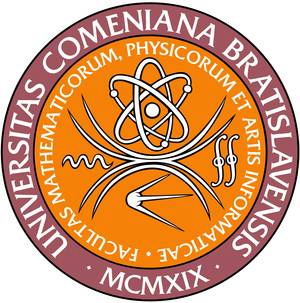Effect of plasma-activated water on Lactuca sativa L. growth and development in hydroponic cultivation system
Mišúthova A., Mehrabifard R., Lukačová Z., Machala Z.
Central European Symposium on Plasma Chemistry 2025, Bucharest, Romania, September 1-5, p. 139 (2025)
požiadaj o kópiu
|
|
Abstrakt: Effect of plasma-activated water on Lactuca sativa L. growth
and development in hydroponic cultivation system
A. Mišúthová1, R. Mehrabifard1, Z. Lukačová2, Z. Machala1
1Division of Environmental Physics, Faculty of Mathematics, Physics and Informatics,
Comenius University, Mlynská dolina, 842 48 Bratislava, Slovakia,
2Department of Plant Physiology, Faculty of Natural Sciences, Comenius University,
Mlynská dolina B2, 841 04, Bratislava, Slovakia
adriana.misuthova@fmph.uniba.sk
The growing global population highlights the urgent need for sustainable food
production. Modern agriculture heavily relies on commercial fertilizers, with nitrogen
being a critical nutrient for plant growth [1]. Cold plasma generates reactive oxygen and
nitrogen species (RONS), which dissolve in water, leading to the formation of plasmaactivated water (PAW). PAW has demonstrated significant potential in agricultural
applications, as the prolonged bioavailability of RONS may act as signaling molecules in
plant metabolism or contribute to nutrient uptake [2]. Also, seed imbibition in PAW used
as priming method resulted in a significant enhancement of the product yield in peas [3].
This study investigates the effects of PAW produced by transient spark (TS) discharge
systems on the growth and physiological responses of hydroponically cultivated lettuce
(Lactuca sativa L.). Four experimental treatments were implemented: (1) a control group
cultivated in Hoagland’s nutrient medium; (2) plants grown from seeds primed in PAW
for 1.5 hours prior to cultivation in Hoagland’s nutrient medium; (3) plants from PAWprimed seeds cultivated in PAW supplemented with Hoagland’s nutrient solution; and (4)
plants cultivated entirely in PAW with Hoagland’s nutrient solution. Seedlings were
initially pre-grown in stone wool baskets for four weeks before transplantation into a
hydroponic system. Ther preliminary results after pre-growning indicates a positive effect
of PAW priming on the seedling size and vitality but germination and early growth in
PAW did not improve the seed growth parameters. At the end of the developmental stage,
key physiological parameters—including chlorophyll concentration, phenolic content, and
antioxidant enzyme activity—were analyzed to evaluate the impact of PAW on the plant
growth and metabolism.
Keywords: dielectric barrier discharge, Lactuca sativa, physiological parameters, plasmaactivated water, transient spark.
Acknowledgements: The research was supported by the EU NextGenerationEU through
the Recovery and Resilience Plan for Slovakia under the project No. 09I03-03-V03-00033
EnvAdwice and the Slovak Research and Development Agency APVV-22-0247.
[1] A. Sharma, R. Chetani IJESRT 5, (2017), 2, 677–680
[2] R. Thirumdas et al,, Trends. Food. Sci. Technol. 77, (2018), 21–31
[3] G.B. Ndiffo Yemeli et al.. Plasma Chem. Plasma Process. 42, (2022) 69, 1143–1168
|

